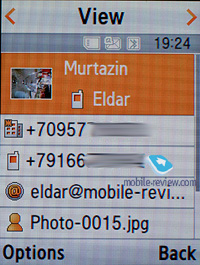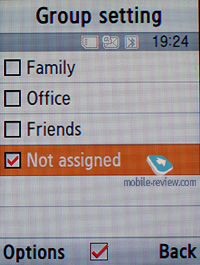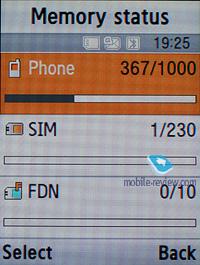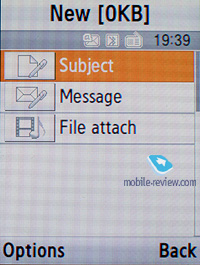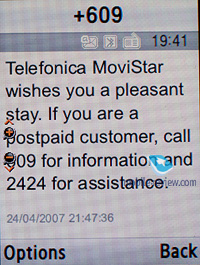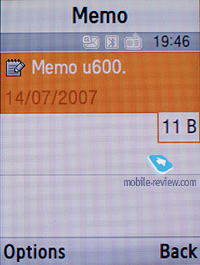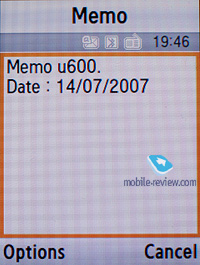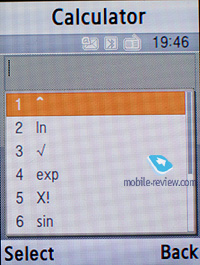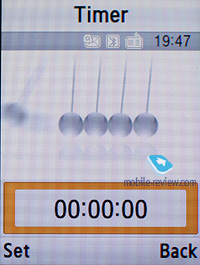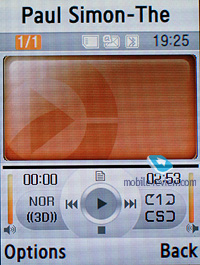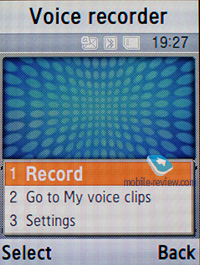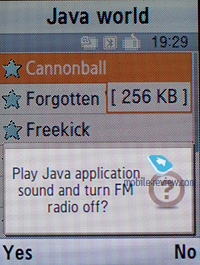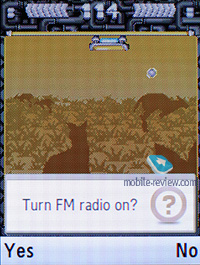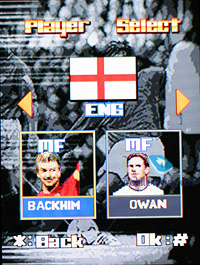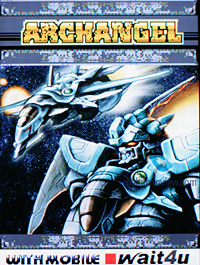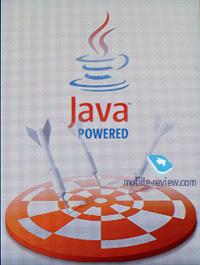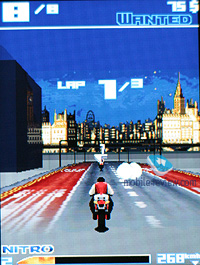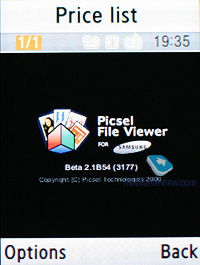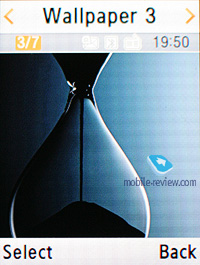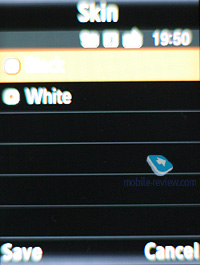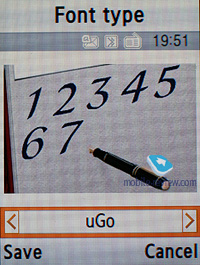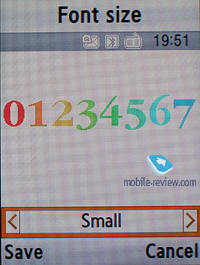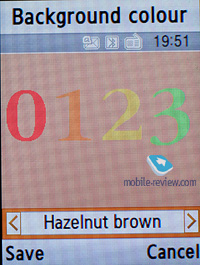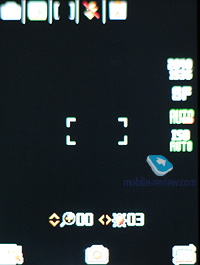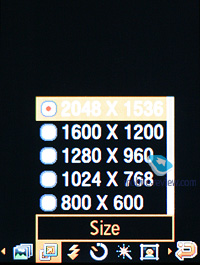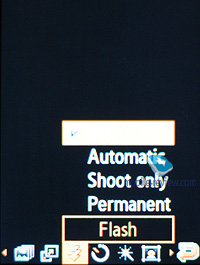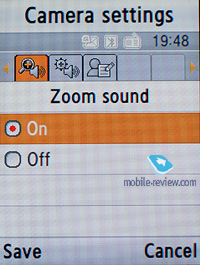|
|
Review of GSM-handset Samsung D900i
Sales package:
- Handset
- Charger
- Wired stereo-headset
- User Guide
- CD with software
- TV Out cable (availability varies by region)
- USB-cable (availability varies by region)
- 256 Mb microSD memory card (size and availability vary by region)
The main gripe the fans had with the Samsung D900 was omitted radio, though all other vendors proposed solutions, packing 3 Mpix camera and flagship positioning, had radio inside. The release of the Samsung D900i aims to satisfy exactly this need of the consumers; thankfully, the model is going to secure its sale rates for at least the next six months, having no counterparts made by other manufacturers. In fact, the Samsung D900 and the D900i share the entire functionality, from start to end, from software to hardware – what sets them apart, are a handful of minor differences. Thus, if you already know everything about the Samsung D900, don’t ponder over skipping right to the Impressions section for too long.
The most substantial design-related difference is the glazed display edging. Such solution lends much visual appeal to the handset, making it look more fetching than the Samsung D900, seem more luxurious. Similar approach has been applied in many Samsung-branded devices released lately, and this is the right move.

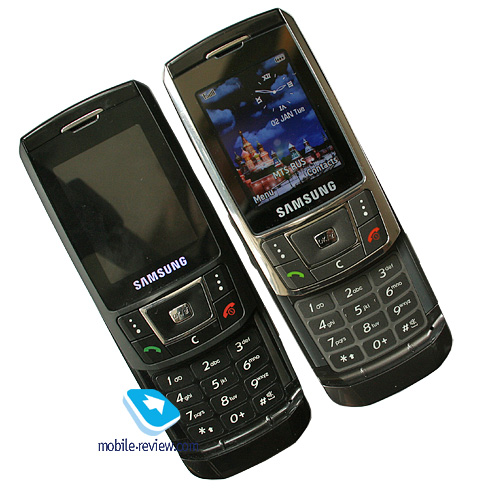

Video – comparing size and outlook of handset (mpeg, 17,3 mb)>>>
Handsets thickness is 12.9mm which is typical for modern day solutions, handset is positioned as “slim” and is part of Ultra Edition, this is fashion tribute. Handsets size is 103.5x51x12.9 mm, weight – 83 grams (manufacturer states 93 grams for some unknown reason). When compared to LG Chocolate – there is no much difference between two handsets, their size is approximately the same. Handset can be carried the way you like, there are no limitations, it will suit you in terms of size so that it can be carried inside jeans pocket or shirt’s ones.



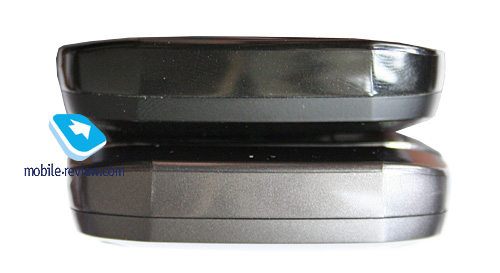
Insignificant weight of handset is explained by refusal of using metallic parts in the case, it is made fully out of plastic. Assemblage quality is at good level, there’s no backlash of two panels, everything is all right. Front panel is easily soiled, it carries markings from cheek, you can see them clearly outdoors, though they are not that evident indoors.


A display installed in this model is great, it has QVGA resolution (240x320 pixels, 33x44 mm), diagonal is 2.1 inches. Display is able to show up to 262k colors (TFT), which are lively and colorful. Up to 8 text lines can fit it, with 4 lines reserved for service needs. This model is clearly superior over Nokia 6233 and Sony Ericsson K800i in terms of display. In some modes it is possible to display up to 12 text lines. Information stays readable outdoors.

Slider has auto-opening mechanism, it is easy to open handset with one had. You will see prop, on which your thumb will be placed easily. You can see the spring that opens handset on the other side of handset.

Numeric keypad has white backlighting, it is equally spread and is nicely seen in different conditions. Keys are average in terms of size, they have small key depression, but this does not cause much problem, on the whole keypad is average in terms of ergonomics. Soft keys, controversially to numeric keys are big and comfortable to work with.
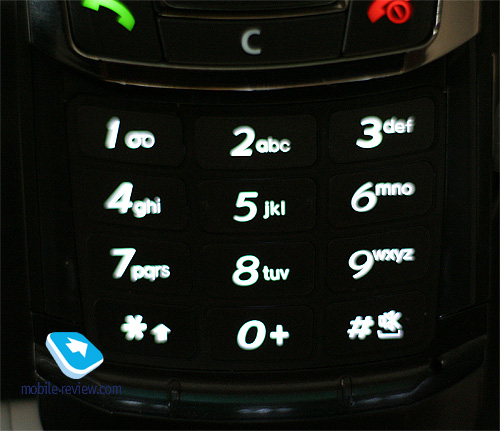
The volume rocker is located on left side, microSD card slot is below. Handset supports hot swap. Camera button is located on right side, just like jack for connecting charger or headset.


Back cover hides battery section underneath, it has no backlash. Battery is Li-Ion type with 800 mAh capacity (this is another point according to which this is not a “slim” series handset, as those have batteries with capacity limited to 630 mAh). Samsung states that this battery will allow handset to work up to 260 hours in stand by mode and around 6.5 hours if you talk. Handset worked for around 3 days in average in Europe, with one hour spent for phone calls, besides only alarm clock was used. At same time in Moscow handset worked for around 2 days with 1.5 hours spent for phone calls. The drawn conclusion sounds like this: handset will work at least 2 days with average load, but 3 days are possible too (minimal load). It takes around 1.5 hours for handset to fully charge up. There is no improved capacity battery available for this model.

Menu
To be blunt, here we are dealing with the Samsung D900, with some software features added and radio onboard. Like the predecessor, the model was born within Suwon R&D centre and reveals much similarity to the Samsung D600, having grown out of this phone. It utilizes Philips chips (Nexperia 6100), whose CPU runs exactly at the same 104 MHz ARM9. The CPU and the hardware design put certain restrictions on the handset’s performance, and while the interface doesn’t seem sluggish, it takes the device some time to save a snap (from clicking on the shutter button to having the snap saved, 2-3 seconds should pass).
Main menu can be introduced as icon matrix (3x3) or as list. All sub-menus have horizontal lists, in case there’s sub-menu, you will see pop-up list on the right of highlighted item. You see which items are stored underneath, and once you press OK button – you will get there. In case you lean navigation key on the right or on the left, you will be able to access corresponding item at once. Ergonomics of such solution is evident, at least one key-press will be saved, and this is interesting solution developed by Samsung.
Video demonstrating how menu operates (mpeg, 35.3 mb)>>>
While surfing the menus you can take advantage of last item memorization in every sub-menu and the main menu. The Handset will “remember” which function you addressed last time, and will highlight it automatically next time you enter same menu item. For example you selected call list in main menu, done some operations in it, and next time you enter main menu you will have it highlighted in first place. But that’s not all; once you access it again you will see that sub-menu item which was addressed last will be highlighted too. It seems to be a simple thing, but it is not present in handsets produced by any other manufacturer.
When hovering over one or another item in the list you will see it highlighted, and font size (which is big already) will be increased.
Fast numeric keypad navigation is supported, but that’s not all options of menu navigation. You can bind three different applications from the list, offered by manufacturer (you will not be able to bind java applications). Leaning navi-key up will always activate My Menu, this is horizontal scroll with list of items. This list is identical to that for simple shortcuts.
uWorld (formerly known as Living World). This is a selection of own wallpapers for each country (major cities might get unique wallpapers in the future, though it is not quite evident). First step in this approach was creating own sets of wallpapers for each country (in future we can hope for seeing customized wallpapers for towns, but this is not so evident). When you will be in Moscow you will see Kremlin wharf and triumphal arch in case you’re in Paris, as for London – house of parliaments, and so on. Besides graphical assignation manufacturer decided to modify wallpaper depending on time of day: in the morning you see sun, and in the evening you see blinding lights of Kremlin wharf, cars will have their headlights turned on
Time is not the only event that can be transferred into graphical approach. For example network reception level: good signal – sky is blue, no signal or weak one – sky is covered with clouds. At first you don’t pay much attention to this small feature, but after a month you will look on the sky instead of standard bar, information can be acquired instantly.
For new messages, missed events or alarm clocks there is a special way of displaying, which is powered with standard, traditional pop-up window with text. In daytime such events will be demonstrated with help of airplane that will fly through the sky, and in the evening that would be fireworks. Color will change according to event type. At a glance this system looks kind of complicated, especially during its description, but in reality it is crystal clear and understandable.
When dialing a number you will see a small image with main theme display and animation of the dialed number.
Phonebook. Contacts can be accessed by pressing right soft key, you will see a list that contains all entries from both SIM-card and phone’s memory. By default first name is highlighted, and you will see phone number in service text line (SIM-card entries are displayed with corresponding icon). Fast name search by first letters is supported; there can be up to twenty of those, for any language. Once you press OK key you will go into detailed view of selected entry. There you will see a thumbnail in case there had been one assigned. It can be an image, a photo or a video clip. Each entry can have up to 5 phone numbers of different types (cellular, office, home, fax other), one of them will be main one (by default it is the first one you entered). All fields are locked.
There are two lines for First Name and Last Name (search is conducted only by first field), fields get summed when displayed, Name comes first. For example Eldar Murtazin will be shown only in this order. Length of each field is 20 characters for any supported input language. You can also switch languages on the go when entering a name.
All entries, without regard to language, are sorted out under the algorithm – all contacts with headings made in a local language (Russian, for example) go first and then those with names in English. This is rather convenient and handy list sorting system. Taking into account fast language switch option during the search, it’s clear that no language will spoil the experience of working with this phone.
But let us return to the information entered for a contact. Apart from phone numbers, e-mail address (there may be several of them), a little text memo can be submitted on top of all that. Any music file as well as composed MP3's can be picked as a ring tone for a contact. Three caller groups are provided by default with the possibility for creating any number of additional groups, selecting a personal melody and image for each (by default there are three groups). SMS alerts are also customizable.
The phonebook is capable of holding up to 1000 contacts with filled in data fields. Even if all the available blanks are not used, the cap won’t get any bigger and will still make one thousand. It is possible to set in the settings where all new numbers should be kept by default. There is also an option for moving entries from the SIM-card although the vice versa action is denied. According to the developers, PC (MS Outlook in particular) is best for data synchronization with the D900i. Any contact in the form of SMS/MMS, mail message or other text file can be quickly sent through Bluetooth to another device. There are no problems with sending and the phonebook entry being transmitted to another device, where it is read without any trouble.
The phonebook may contain a business card as well, though its structure copies all the fields applied to a regular contact in the phone book.
There can be up to eight numbers in the fast dial list; separate numbers tied up with a single contact may appear on this list as well. The subtitle of the chosen entry (not of the phone number type) is displayed on the buttons.
When receiving a call, a picture occupies not the entire screen, but only a part of it, however it still takes up a considerable area.
Call lists. Each of the given lists contains up to 30 phone numbers. There is a combined list of all the last calls with an icon indicating a call type. Deflecting the navi-pad horizontally, you can switch quickly from one list to another. The date and the time of a call without special note of duration are displayed in extended view for separate entries. Calls from/to one number are summarized, so that a number standing next to the call specifies total amount of calls made. In order to access duration data you will need to call up detailed information on desired item. As always, the overall time of the calls and their prices can be viewed in this menu (in case the service has been enabled).
Messages. Management of various types of messages is implemented through separate submenus. Let us begin with short messages. The phone memory can hold up to 200 messages simultaneously; the handset supports EMS standard compatible with Nokia Smart Messaging. T9 text input capability comes in handy and is easy to use. When at choosing recipient window, you can either select a telephone number from your contacts or pick one from the call lists or groups. All messages are manageable, this means you are at liberty to move a certain number to your black list, in order to make sure all messages coming from that phone number will be deleted automatically; possibility for moving messages to any own folder is also at your disposal. For e-mail you can move not only addresses to the blacklist, but unwanted subjects as well.
One of the options on the menu is Vivid Message, which allows viewing a message in 3D mode – the handset converts frequently used words to graphics, for example having typed “Kiss you”, you will see lips, blowing kisses. On the face of it, a simple algorithm that allows manifesting your imagination.
MMS. The interface for multimedia messages looks quite good; the messages can be saved in several folders right away after receiving or drawing up. There are no size restrictions on received messages, though an outgoing message’s size is limited 295 KB. As for additional services available with the D900i, advertising messages rejection and message receiving type options are onboard. All messages are stored in general dynamic memory, the same goes for e-mails.
Also there is a useful function for sending SOS-messages – when activated, should you find yourself in an emergency, after pressing the volume key four times, the message «I am in emergency. Please help me» will be sent to contacts submitted earlier, all incoming calls from these numbers upon sending the emergency message will be picked up automatically. Recipients (not more than 5), as well as number of Repeats may be set up manually, while text of the SOS-message is not manageable.
The bundled mail client is standard in all its components – 5 accounts and the maximum of 100 incoming messages; attachments are also handled by the phone, though there are also several caps – there’s no way you can receive a file more than 5 Mb in size, or send one with size exceeding 300 kb. Received files can be viewed via Picsel Browser.
Planner. There can be up to 400 different events of four types (4x100) - meeting, affair, anniversary and others. The day and the time as well as end time of the even are indicated for each entry. Alert signal, as well as its duration can be adjusted according to your liking; repeatable events are available for setting up (at that repeat time is also adjustable as well as exclusions). The weekly and the monthly calendar views are very convenient with each type of the event having its own color.
Tasks – a standard list of tasks with the possibility of stating priority. Maximum capacity of this section is 100 entries.
Speaking about the organizer’s shortcoming, I cannot overlook the fact that when typing date and time for an event, the end time doesn’t change, which badly hurts ease of use – other manufacturers make the due time shift automatically (by default an event takes one hour). World time is displayed for two chosen cities.
Alarm clock. The phone is equipped with three alarm clocks. One is meant for mornings and can be set for selected weekdays as well as for weekends. For each of the alarm clocks there is a selection of five tunes, though necessity of them is questionable, as mp3 tracks can be used there as well. It is up to user to set up whether the phone will turn on automatically in the time of the event or not.
Calculator. It divides, multiplies, subtracts and adds and does several more things – quite enough for a mobile calculator.
With a converter, you can operate with different units of measurements as well as with a number of currencies.
Memo – standard text notes.
Countdown time and stopwatch have no bells and whistles.
WAP. There is a wap-browser ver. 2.0 (OpenWave 6.2.3.3), similar to that carried by some phones by Nokia and Sony Ericsson, using http protocol. The browser automatically offers you standard prefixes and endings of the entered addresses. Although it’s packed with features, it would make more sense if you replace it with Opera Mini. On top of that it doesn’t support loading big pages, so that its area of application gets reduced to something located between slim and nil, as it will handle only wap-pages, while real Internet page will remain off-limits to it.
Applications. MP3 player. An integrated mp3 player, supporting random track playback, sequential and cyclic, is available on the phone. Mp3 files can be uploaded to the phone both directly through Bluetooth and through a synchronization application. There are no limitations, placed on tags and names of music files. The user is armed with nearly 65 Mb of storage (and memory cards) for filling up with music and other apps and other content.
The title of the played back track is displayed as well as the number of the remaining tracks. The equalizer doesn’t make much sense, as there is no precise adjustment of audio controls (only a possibility to choose from classic, rock, jazz and normal sounding). The tracks can be played through the stereo headset as well as through the speakerphone. The volume bar has 10 scales on it. And of course user can make up playlists of his own. Player can work in minimized mode.
FM-radio. You can store up to 20 radio stations in the memory; the range of available frequencies varies from 87.5 MHz to 108 MHz. Also, you can enjoy auto-tuning, but particular channels cannot have own names attached – they are always shown as the frequency, numbers. The radio can work in handsfree mode, plus enables you to set it up as alarm clock, but regardless of how you are going to use it, a plugged-in headset is a must, since it doubles as an antenna. On top of that, the radio here brings a quite unusual feature alongside – there can be up to three sound notifications, some sort of alarm clocks. How it works: you specify date and time, frequency, and then the radio turns on automatically when the time is right, so as to ensure that you don’t miss the broadcast you wanted to hear. The radio implementation is fine, although it doesn’t pick up just all stations equally well, but on the balance, it is quite competent, in comparison to other vendors’ offerings. The radio can be minimized.
Voice recorder. You can record up to several hours of voice memos with the number of files being unlimited. Basically, limitations on recording durations are set by user himself, though length of a single recording cannot exceed 1 hour. All the files are stored in a separate folder in the memory bank. The recorder performs well during lectures, conferences and presentations – I could even say that it is a partial substitute for a digital tape recorder.

Java World. The D900i carries 7 pre-installed games – 4 full versions (Freekick, Forgotten Warrior, ArchAngel, Cannon Ball) and 3 demos (limitation on levels or time). Demo versions look pretty interesting, as there can be Asphalt 2 Urban GT, Sonic and so on. Since the model belongs to Suwon’s nest, it doesn’t have support for usual methods of uploading Java via Bluetooth or cable (requires a look-up in service settings and activation, though malfunctions will occur from time to time). JAR-file cannot exceed 1 Mb in size (at that uploading via wap is limited to 500 Kb). Memory assigned to storing Java-based applications makes 4 Mb and taking account of already pre-installed apps, I doubt new games or programs will squeeze into 500-600 Kb. However you’re at liberty to delete any of the default games.
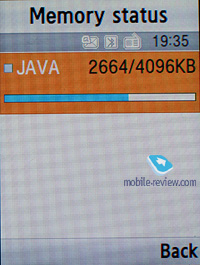
Image editor. A basic picture editor, which allows transforming images by using a variety tools.
File Manager (My files). That’s the place to search for all files such as music, pictures, video and sounds. Any uploaded file gets stored here. The disadvantage is that files sometimes are not displayed in the list immediately - in that case you will need to leave the menu and enter it again.
Files and folders can be viewed either as a list or as thumbnails. You can select any amount of files. The handset supports Move, Copy and Delete operations, as well as various types of sorting (by type, name or size)
Memory card’s file structure is a slightly different story, as it can be accessed through the main menu, where each item features “Memory card” option.
Settings. This item boasts a standard set of options inside - font color in the standby mode, password protection of selected sections (messages, short messages, organizer, etc.), backlighting duration and brightness, dialing display (no custom animations are available, one is assigned to the default theme – uWorld). Calling up Security item allows protecting certain functions and menus with password.
Backlighting duration –there are three options at your disposal, one of them is Night mode , implying that backlighting will be active only between 5:00 PM and 9:00 AM and disabled during daylight. If you come and think of it, this feature nothing more but an illusive replacement for illumination indicator, which Motorola’s handsets are armed with.
Mobile Tracker – submit a phone number, where notifications will be sent to in case SIM-card was changed – that message will contain number of the SIM-card being used with the handset. This section is protected with password, so that no one other than you or someone else who knows the password could disable the Tracker. Should your device have the SIM-card switched once, the specified number will receive one message instantly, and one more each time a new card is plugged in. A fetching feature which can prove to be of much help in case the handset is lost or stolen.
Flight mode – you can disable network part of handset.
The handset lacks profiles system and offers only adjustable events settings, which makes it look like it came from the past – for example, newest Samsung’s 3G devices have profiles onboard (though many other functions have disappeared). The D900i has got many vibrating alert modes and tunes in its sleeve, everything here works without any limitations, but what really frustrates me is inability to set an own tune for incoming SMS-message or e-mail – you are enabled to choose only from 10 pre-installed simple tunes found on the handset. On the other hand, ring tones are adjustable for contact groups, stand-alone entries in the phonebook and even for the alarm clock; therefore it’s somewhat obscure why not all alerts are customizable.

Bluetooth. The handset flaunts support for various profiles, specifically, Headset, Handsfree, Serial Port, Dial Up Networking, File Transfer, Object Push. Bluetooth in the D900i is quite stable, we encountered almost no issues.
USB-connectivity. The menu enables you to pick one of the three available modes: Modem, Mass Storage, Pictbridge. While in USB Mass Storage, the D900i shows up on the desktop without having to install any additional drivers, so right after plugging it’s ready to work. However USB 1.1 isn’t inspiring at all when using big memory cards, so in that case using card readers would make sense.
Voice Clarity – an equalizer-like feature, which allows boosting voice quality in some conditions (on unstable connection). By default this option is turned on.
Slide action settings item features options which can be assigned to opening and closing, in other words they determine whether the slider is active or not.
Reject call with SMS – such function is still uncommon on ordinary phones, while Symbian-based smartphones have been boasting it for quite a while already. The point here is quite simple, however: you create a message and when you reject an incoming call for some reasons, this SMS will be sent to the caller’s number automatically. But all in all, the feature is a high profile one, relevant to a very limited amount of users.
Performance. Unlike Gumi’s handsets, the D900i doesn’t support 3D packets, so we had been forced to measure its performance using Jbenchmark version one and two only, which turned out to be on the same level with Samsung-branded phones and devices released roughly two years ago.
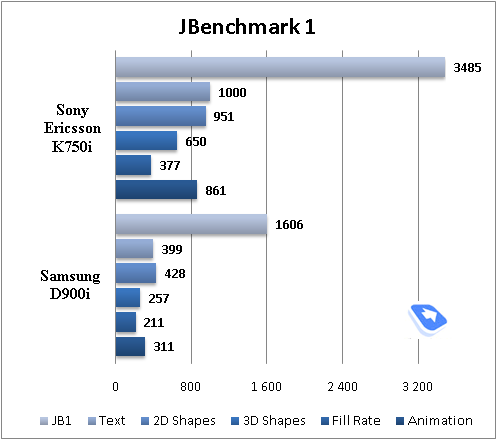
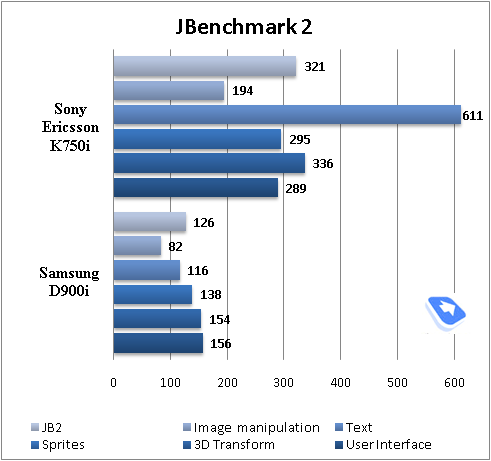
Apart from viewing data on the screen, an image may be sent to external sources, for instance, a TV-set, projector. A TV-OUT cable is not included into the retail package. One end of the cable is a miniUSB connector and another one is three "tulips" for connecting to external sources. I had a TV-set as an external source. Plug all the cables in and connect the phone. And here it is! The menu is shown on the TV screen, moving along the phone menu you see your actions on the screen. You can view any standard applications, full-screen video (pixels are seen too much for 3GP files, the resolution is still improper), photos, play games if you like to. A TV-set not only represents the picture but reproduces the sound from the phone.
Video player. MPEG4 format (audio AAC) is supported, maximum possible bit rate makes 1.5 Mbps. The handset supports various resolutions up to CIF, however capturing in QVGA resolution (at 30 frames per second) is somewhat better. No extra features are enabled in these player, unless you call rewinding and full-screen mode (by pressing “1” key, the picture can be rotated in two directions) the ones.
Camera. The newcomer is no different from the D900 in this respect, as it adopts the same module. On the other hand, it sports a revamped interface, allowing you to perform most actions without leaving the viewfinder mode, whereas less coveted features ended up in Settings menu (for example, default shot name, shutter sound, focusing mode, etc.). This menu, along with the merged features list (stills/video settings, folders, shooting modes) is bound to the right soft-key. The main on-screen menu is laid out horizontally and sports semi-transparent appearance. This approach proves to be worth the efforts – the handset has got much easier to get along with. Speaking of the settings, for the camera they haven’t changed a bit.
The camera supports the following resolutions:
- 2048x1536 pixels;
- 1600x1200 pixels;
- 1280x1024 pixels;
- 1024õ768 pixels;
- 800x600 pixels;
- 640x480 pixels;
- 320x240 pixels;
- 240x320 pixels;
- 240x180 pixels.
There are three quality grades available: Normal, Fine, SuperFine, at that using the best possible appears more preferable – the difference between these levels is noticeable, especially if you’re aiming at viewing snapped shots on PC.
The camera retains auto-focus with enabled Pan Focus mode (focusing on the centre point). Exposure can be metered only by one point, image’s central area or by the matrix. White balance is set to default, when managing it manually, Daylight, Incandescent, Fluorescent, Cloudy, Sunset options are available. I’m not arguing that the amount of modes is impressive – many will find playing around with all these bars captivating; though this variety of features would fit a digital camera better, since the concept of a camera integrated in a handset is different (occasional shooting).
Shutter sound, as well as zoon sound can be disabled should you want it. The D900i’s camera includes 14x digital zoom feature, which is quite useless though, as exactly the same effect can be obtained by rendering it on PC. Brightness can be adjusted in the range from 1 to 6 (3 by default).
The camera also allows for your possible desire for overlaying special effects during shooting and offers White, Negative, Sepia, Emboss, Sketch, Antique, Moonlight, Fog. Taking account of the bundled picture editor proposing just the same functions, “spoiling” the initial photo with effects seems pointless.
Decorative frames are many here, and can amplify the looks of your photo, but in return they reduce image size to 240x180 pixels.
The flash module adopted by the D900i employs LED, which means it can double as a flashlight as well (by working without a break). Effective distance for this flash is not too big, so that it works only for highlighting items located at short range.
The settings also enable you to set default name, customize sensitivity (Auto, ISO 100, ISO 200, ISO 400). Personally, I recommend that you use the Auto mode, since it performs quite well and gets the right parameters in most cases. On top of that there is no visible difference between abovementioned sensitivity levels in normal environment – there is no way you can spot changes produced by lower/higher sensitivity in that case. If you would like to take a group photo of your friends, but don’t want to be left out, set a Timer (3, 5 or 10 seconds).
The Mosaic mode downgrades resolution to the lowest one (final image makes 640x480 pixels in size), so that you could get a grid consisting of 4 or 9 pieces (2x2, 3x3). Generally speaking, it’s a mode for days when you feel like taking some fancy shots.
While in Multi shot mode, the camera snaps really fast, which makes it possible to acquire 6 pictures at a time (everything happens is an eyewink), in case this is not what you’re looking for, there is a normal mode as well (gap between shots – one second or a bit less). Modes with 9 and 15 pictures taken in series are also available. I’ve already said this and will repeat it again: this feature works fine for photo-finishes at tournaments etc., but in real life it won’t be of much use – when moving the handset most of shots get blurry. Resolution in this mode switches to 320x240 pixels.
All photos are stored in the Album, where you detailed data on every picture. Any image found in the Album can be assigned to a contact in the phonebook or set as wallpaper outright. Slide-show mode and a basic editor (allows applying emoticons, frames and special effects) are at your disposal. In terms of shots quality the camera is almost identical to Samsung D900, being tidy for this class.
The handset has support for capturing video in mpeg4 format either with or without sound (adjustable in menu). All settings almost precisely copy those for single shots – three quality levels, special effects, but different resolutions of clips. Maximum resolution is 355x288 pixels (15 frames per second), quality-wise the model resides in the leading group on the market and outdoes each and every handset in its class. Absence of an extra microphone for recording sound tracks (like on the D830) might affect recording quality.
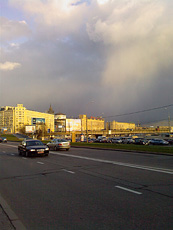 |
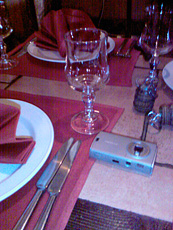 |
| (+) maximize, 1536x2048, JPEG |
(+) maximize, 1536x2048, JPEG |
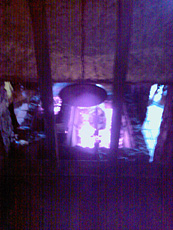 |
 |
| (+) maximize, 1536x2048, JPEG |
(+) maximize, 1536x2048, JPEG |
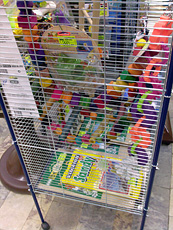 |
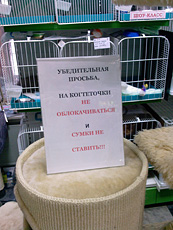 |
| (+) maximize, 1536x2048, JPEG |
(+) maximize, 1536x2048, JPEG |
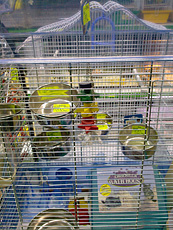 |
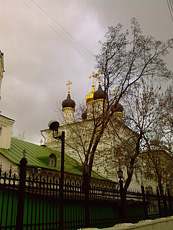 |
| (+) maximize, 1536x2048, JPEG |
(+) maximize, 1536x2048, JPEG |
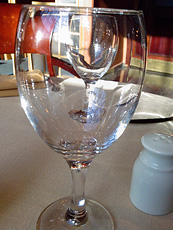 |
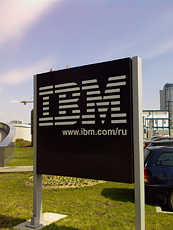 |
| (+) maximize, 1536x2048, JPEG |
(+) maximize, 1536x2048, JPEG |
 |
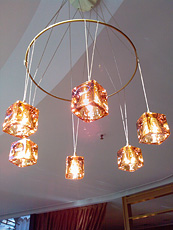 |
| (+) maximize, 1536x2048, JPEG |
(+) maximize, 1536x2048, JPEG |
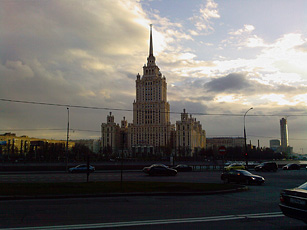 |
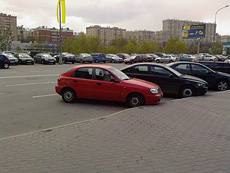 |
| (+) maximize, 2048x1536, JPEG |
(+) maximize, 2048x1536, JPEG |
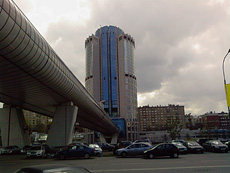 |
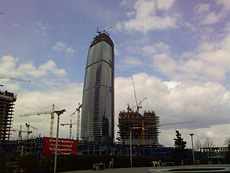 |
| (+) maximize, 2048x1536, JPEG |
(+) maximize, 2048x1536, JPEG |
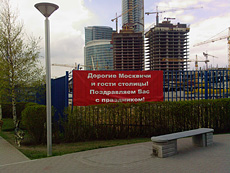 |
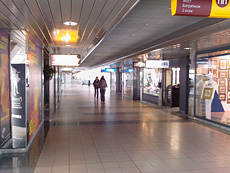 |
| (+) maximize, 2048x1536, JPEG |
(+) maximize, 2048x1536, JPEG |
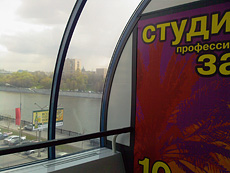 |
 |
| (+) maximize, 2048x1536, JPEG |
(+) maximize, 2048x1536, JPEG |
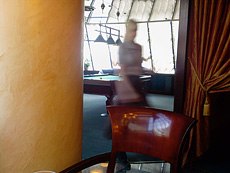 |
 |
| (+) maximize, 2048x1536, JPEG |
(+) maximize, 2048x1536, JPEG |
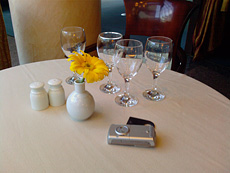 |
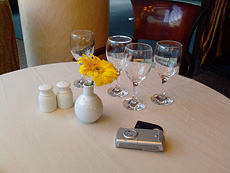 |
| (+) maximize, 2048x1536, JPEG |
(+) maximize, 2048x1536, JPEG |
 |
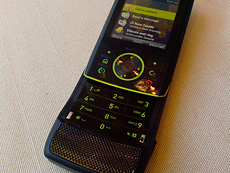 |
| (+) maximize, 2048x1536, JPEG |
(+) maximize, 2048x1536, JPEG |
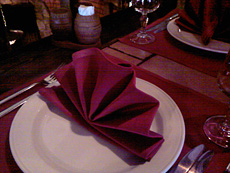 |
 |
| (+) maximize, 2048x1536, JPEG |
(+) maximize, 2048x1536, JPEG |
Video sample 1 (mp4, 605 Kb)>>>
Video sample 2 (mp4, 2,12 Mb)>>>
In terms of shots quality the camera is almost identical to Samsung D900, being tidy for this class.
Impressions
The reception quality delivered by the D900i matches that of other Samsung-branded devices and allows no gripes. Overall ring tones volume as compared to Samsung D600 is slightly lower – in this respect the latest offspring reminds of Samsung D500. The silent alert is average strength-wise and features no fundamental enhancements.
The new model sports not so many differences from the basic D900. The main first thing you will come across is that the missing radio, which many were craving for, is now built in. The revamp of the camera’s interface is not particularly crucial – it is more of a consistent step that will emerge in the upcoming devices to even greater extent. Probably, one more function is worth mentioning, which wasn’t available before. This is so called Whisper Mode that can be enabled during a call – guessing from the name you could assume that with this on, the handset ensures some sort of privacy for calls, but the things stand quite different. The microphone changes its sensitivity in this mode, which is interesting when taking in noisy rooms, at parties etc., people on the other end do notice enhancements. At the same time the earpiece starts outputting louder sound, which is gets worse in fact, but provides more clarity in return. None of the manufacturers has come up with the Whisper Mode counterpart up until now.
Who this device will cater for? Probably, for those who haven’t picked the Samsung D900 for some reasons, particularly due to missing radio, while the rest of the functionality felt fine. Also, if you are looking for good snaps quality within a slider-style form-factor, this is the solution worth considering. At the same time such offerings as Sony Ericsson K790/K800, Nokia N73 can take even better picture. The Samsung D900i is interesting rather as a fashion handset – in the same way, which the D900 used for building up its name on the market, and enjoying its current fair share of success. Design-wise the D900i has more appeal, being more a eye-catching device.
But since the Samsung D900i will be shortly followed by a new flagship – the Samsung U600, you come to realize that the D900i is only an intermediate model. We won’t present you with a comprehensive face-off between these two handsets, and would rather limit it to the most newsworthy aspects to make it clear whether the Samsung U600 is worth waiting for, or you will be quite content with the D900i.
- Questionable ergonomics of the U600’s touch-sensitive keys
- Worse camera quality, the U600 has a different unit
- No sorting by first and last names in the U600’s phonebook
- U600’s interface has been made over, most features have been enhanced in the U600, since it’s a next-gen device
- Next-gen music player, tidy sound quality
- Smart Search
- Improved browser
- Shorter battery life at skinnier handset
As you see, each has own pros and cons, but when actually comparing these solutions, at the price gap we have now, the Samsung U600 is worth looking at. If it were not for the touch-sensitive buttons, the rest of its omissions could have been readily overlooked and would’ve felt safe to say that it is a more interesting offering.
As of today, Samsung D900 retails for about 400 USD (new sales package with no BT-headset and memory card included), while the D900i arrives in the market in may at a price of around 500 USD, which will then gradually come down to 450 USD, leaving the gap at the level of 50 USD. Is it fine to pay 50 dollars more for such extra as radio? I’m not quite sure – in this regard, the Samsung D900 starts looking more fetching, especially when its lifetime comes to an end. High price of the Samsung D900i also provokes consumers into going for the Samsung U600, which is the company’s try goal – this device is the flagship, being promoted by all means on the market. But, we’ll get back to this later in the review on the Samsung U600.
Eldar Murtazin ([email protected])
Translated by Oleg Kononosov ([email protected])
Published — 08 May 2006
Have something to add?! Write us... [email protected]
|
News:
[ 31-07 16:21 ]Sir Jony Ive: Apple Isn't In It For The Money
[ 31-07 13:34 ]Video: Nokia Designer Interviews
[ 31-07 13:10 ]RIM To Layoff 3,000 More Employees
[ 30-07 20:59 ]Video: iPhone 5 Housing Shown Off
[ 30-07 19:12 ]Android Fortunes Decline In U.S.
[ 25-07 16:18 ]Why Apple Is Suing Samsung?
[ 25-07 15:53 ]A Few Choice Quotes About Apple ... By Samsung
[ 23-07 20:25 ]Russian iOS Hacker Calls It A Day
[ 23-07 17:40 ]Video: It's Still Not Out, But Galaxy Note 10.1 Gets An Ad
[ 19-07 19:10 ]Another Loss For Nokia: $1 Billion Down In Q2
[ 19-07 17:22 ]British Judge Orders Apple To Run Ads Saying Samsung Did Not Copy Them
[ 19-07 16:57 ]iPhone 5 To Feature Nano-SIM Cards
[ 18-07 14:20 ]What The iPad Could Have Looked Like ...
[ 18-07 13:25 ]App Store Hack Is Still Going Strong Despite Apple's Best Efforts
[ 13-07 12:34 ]Infographic: The (Hypothetical) Sale Of RIM
[ 13-07 11:10 ]Video: iPhone Hacker Makes In-App Purchases Free
[ 12-07 19:50 ]iPhone 5 Images Leak Again
[ 12-07 17:51 ]Android Takes 50%+ Of U.S. And Europe
[ 11-07 16:02 ]Apple Involved In 60% Of Patent Suits
[ 11-07 13:14 ]Video: Kindle Fire Gets A Jelly Bean
Subscribe
|






















